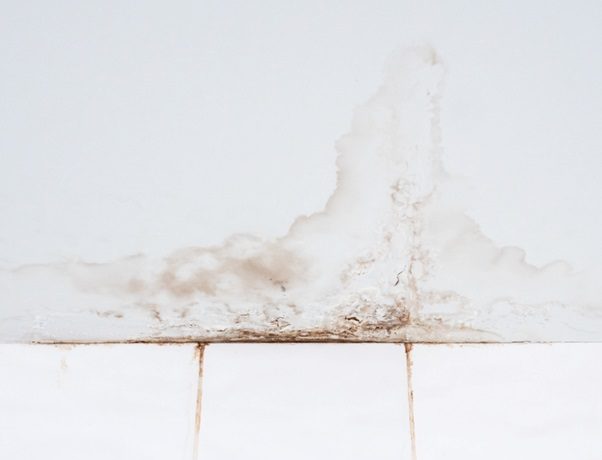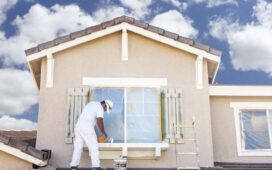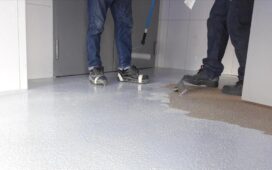Believe it or not, more than 40% of homeowners have experienced some sort of loss as a result of water damage. This is because water damage is more prevalent than you would think, and it makes sense when you learn all of the ways your home can end up with water damage.
It’s best to be prepared so that you don’t end up with more damage and costly repairs when it happens in your home.
Read on to learn about the types of water damage, signs you have it, and what to do about it.
What Exactly Is Water Damage?
Water damage occurs when you experience water leaking where it shouldn’t be for any number of reasons in your home. It could be due to leaving the water running by accident, a storm, or a broken pipe. Whatever the cause, it causes health hazards and weakens the structures in your home, making it an unsafe place to live.
Types of Water Damage
There are many types of water damage that may occur in your home.
Drywall Damage: Drywall damage is water damage that affects the walls. It may not feel as urgent as other types, but mold can grow within your walls, so you should have the area cut out and replaced as soon as possible.
Carpet Damage: The fabric that makes up the carpet absorbs liquids quickly, making it easy for carpets to get damaged by water. In the case of carpet damage, you usually need to replace your carpet, but sometimes it can be salvaged by a professional cleaner.
Wood Damage: From hardwood floor water damage to that of wooden beams in your home, water damage to wood warps the material over time. This damages its structural integrity.
Ceiling Damage: Ceiling water damage can be the result of a roof or upstairs leak, but this is an urgent fix because you don’t want any part of your roof to collapse.
Foundational Damage: Water can cause foundational damage by warping wooden support beams as we mentioned before. It can also find its way into the cracks in brick and concrete, freeze and expand, and cause more damage.
Electrical Damage: Water and electronics have never agreed. If water gets anywhere near electrical wires, outlets, or your fuse, the result is dangerous.
Why It’s Dangerous
Water damage is extremely dangerous. Electrical damage can short circuit appliances, which is costly. It can also shock you.
Water leaks that are left unresolved for too long will grow water damage mold. Mold is a health hazard known to cause respiratory illnesses.
There are also different categories of water, based on its cleanliness, that can leak into your home. If you have a sewage issue, for example, you may get what’s called black water and is incredibly unsanitary.
Common Causes of Water Damage
There are many underlying causes of water damage, from those that are external to those occurring within the home. External factors include those such as storms and bad weather that damage your walls or roof, while internal factors include those such as pipe leaks. Here are some of the common causes of water damage in the average home:
- Flooding
- Bad gutters
- A damaged or leaking roof
- A damaged irrigation system
- Frozen, corroded, broken, or clogged pipes
- Running water left on in your bathtub or sink
Signs That You Have Water Damage
So, how do you know if you have the start of water damage?
Sometimes it’s obvious as you can see standing water or puddles in your home. Other times, it may not be as noticeable right away. If your home has any of these symptoms, it may be due to water damage:
- Spongey walls
- Walls are cracking or flaking
- Brownish discoloration on walls or ceiling
- Warped or swelling wood
- An unpleasant, musty smell
- An increased water utility bill
The Cost of Fixing Water Damage
Water damage restoration is one task that shouldn’t be done DIY. This is because it’s not safe and requires technical expertise and tools.
There are two parts to any water damage restoration process: removing any standing water and fixing the damage left behind.
Standing water always needs to be completely removed immediately. There are companies that remove standing water with the help of pumps designed for the task. Then, areas that were affected should be replaced or fixed. If your walls or carpet were damaged, they’ll likely be cut out and replaced.
Electrical damage also requires special expertise to be taken care of safely.
Due to the nature of the project and the expertise required, fixing water damage can be costly. On average, removing water and doing the repairs costs around $2,000 each, for a total of $4,000. Of course, the true cost will depend on the amount of water to be removed and the extent of the damage.
The best thing you can do for yourself is to get any damage fixed immediately so that it doesn’t get worse and rack up costs.
If you’re looking for a company to handle your water damage restoration, this blog has 10 tips that may help: https://www.ctr-nw.com/water-damage-restoration-near-me-10-tips-to-find-the-best-company.
How to Prevent It
Some causes of water damage are out of your control, but many can be prevented if you take the care to try and maintain the structures in your home.
Here are some great tips for limiting your chances of getting water damage:
- Turn water all the way off when you leave a room
- Disconnect hoses that are not in use
- Clean out your downspouts and gutters
- Maintain your appliances
- Replace your roof when it’s time
- Seal cracks around your home
- Monitor your water bill
You can also invest in water detection devices that will alert you if there’s a water issue in your home.
Get Water Damage Fixed ASAP
Know that you know the costs and hazards of letting water damage live in your home, don’t wait to get it fixed. The sooner you invest in water damage repair, the less you’ll have to pay down the road. Follow up with our preventative tips to keep your home safe.
If you found this article helpful, be sure to visit our blog regularly for more home and living tips and advice.












